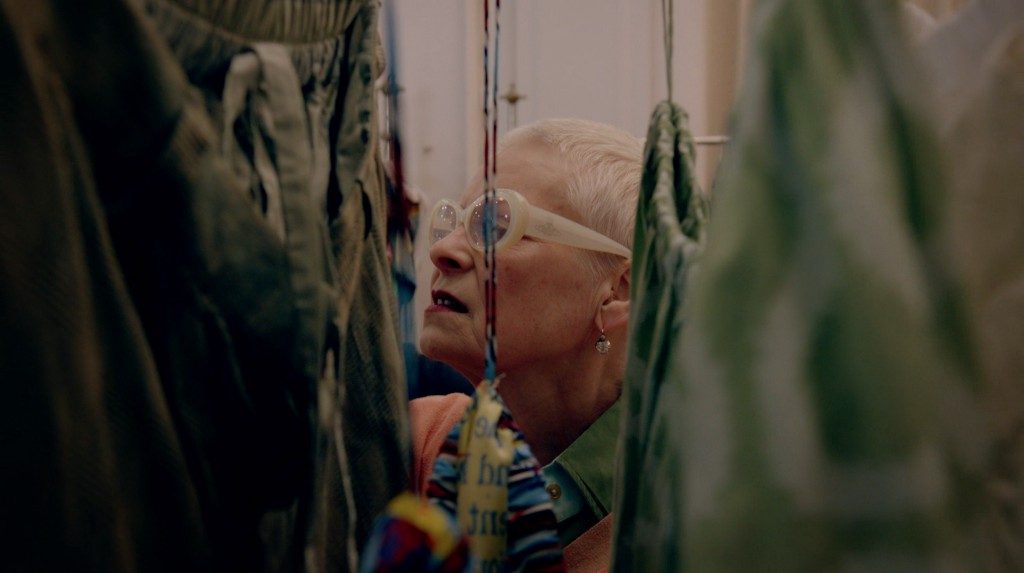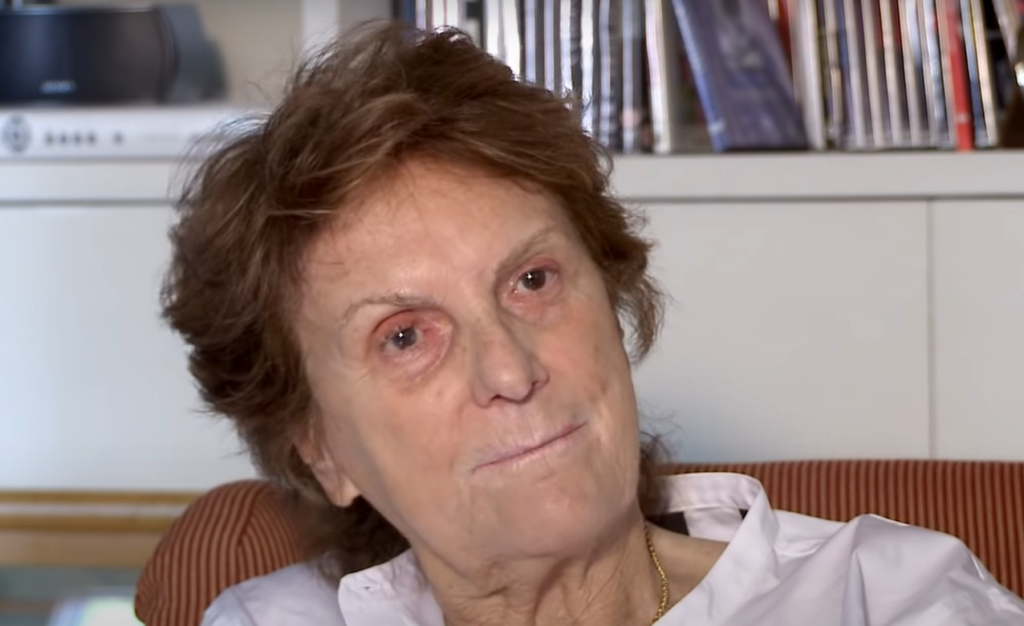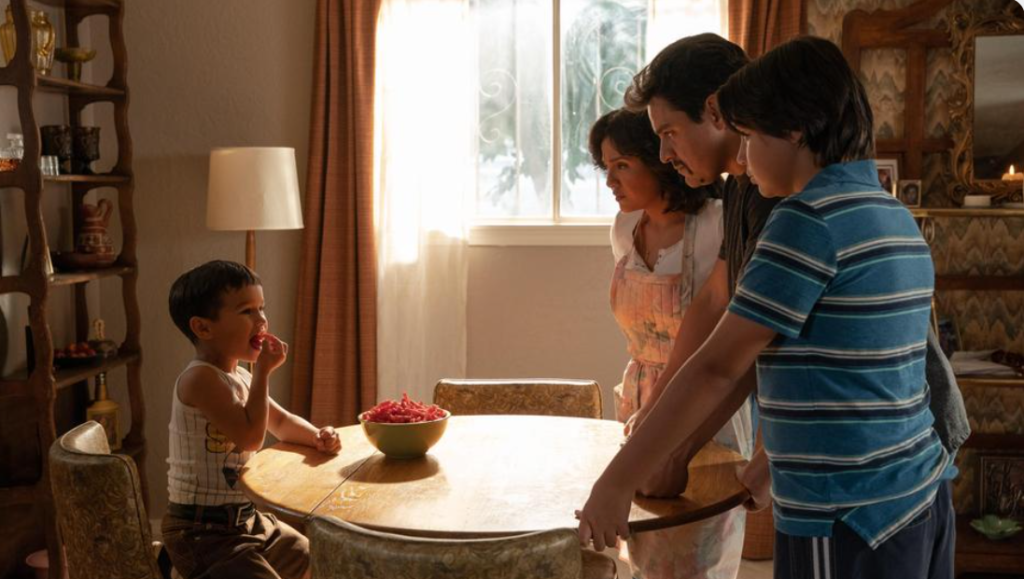Lorna Tucker cut her teeth working behind the camera creating tour videos and music promos before moving onto directing documentaries, writing scripts, and creating more experimental video art projects for the likes of Alexander McQueen and Vivienne Westwood. Her films have screened at São Paulo Museum of Modern Art and Guggenheim Bilbao. “Westwood: Punk, Icon, Activist” is her first feature.
“Westwood: Punk, Icon, Activist” will premiere at the 2018 Sundance Film Festival on January 20.
W&H: Describe the film for us in your own words.
LT: I never set out to make a fashion film — instead I wanted to create a portrait of an artist, businesswoman, and activist. “Westwood” is a film that presents Vivienne Westwood as she is today but dips back in time to explore how she got there, and why she’s as relevant as ever.
W&H: What drew you to this story?
LT: I’m naturally drawn to powerful, inspiring, and strong women. I met Vivienne many years ago, and the more I got to know about her the more I was inspired.
From her humble but loving beginnings in Glossop during the war, moving to London and trying to reconcile her artistic ambition with her working-class roots, co-curating Punk in the 1970s with her then partner Malcolm McLaren, overcoming challenging relationships, living life as a single mother, countless financial hardships, press attacks and personal woes, and still coming out on top.
She’s motivated by love not greed. For me she was like a tough teacher, unapologetic, truthful, and passionate. Always giving everything her very best. At the age of 76, a woman, an artist, a business person but still fighting the good fight, and doing her bit to leave the world a better place. I was drawn to her contradictions, ones that she herself recognizes and tackles head-on. She’s a force of nature.
W&H: What do you want people to think about when they are leaving the theater?
LT: Hopefully they will be entertained and inspired in equal measure. People criticize so-called celebrity activists and having spent time with Vivienne I really wanted the film to show how much Vivienne cares about the things she stands up for, and really walks the walk in her personal life and in the way she runs her company.
She has inspired me to make small changes in my life that really can make a big difference, for example something as simple as switching to a green energy provider — if everyone did that one thing it would take the power out of the fossil fuel industry!
W&H: What was the biggest challenge in making the film?
LT: The hardest challenge was that I was making two first feature documentaries at the same time, so naturally nobody would give me any money for the major part of filming. It’s been my “Fitzcarraldo.” Thankfully I had an incredible producing partner in Eleanor Emptage and she literally begged, borrowed, and stole to get “Westwood” into edit.
Partnering up with Dogwoof, and John Battsek, and Nicole Stott at Passion Pictures really helped to give the project momentum and guidance. They helped me no end. With our editor Paul Carlin we managed to finally get the film finished.
W&H: How did you get your film funded? Share some insights into how you got the film made.
LT: Having not completed a feature documentary before, it was difficult to get financiers to commit to the project. Our company had to self fund the initial shoots, but had in-kind support from Arri, and a crew who were incredibly generous with their time, so we were able to make a little go a long way.
Then Creative England took a chance on us, funding a teaser, which helped us secure UK distribution and sales representation from Dogwoof, who have been a real driving force on the film. We were also incredibly lucky to have financial support from a couple of production funds.
W&H: What does it mean for you to have your film play at Sundance?
LT: It’s the highest honor, right? We were deep in the throes of the final weeks of edit when we found out, so it was a surprise — and a shock — but I’m really looking forward to coming out and meeting other filmmakers, watching some great films, and seeing “Westwood” on the big screen!
W&H: What’s the best and worst advice you’ve received?
LT: The best advice was to follow and trust my instinct. The worst advice was not to tell people that I had a partner or kids as they might not want to sleep with me, and that would make them less likely to back my films. I kid you not!
W&H: What advice do you have for other female directors?
LT: Surround yourself with people who are more talented than yourself. It pushes and inspires. Try to give people the opportunities you were given.
W&H: Name your favorite woman-directed film and why.
LT: I don’t tend to take a person’s gender into account when I watch a film. However, I loved watching Kathryn Bigelow’s “The Hurt Locker” because it broke the mold of what people expected a “female” film to be like: it was dark, it was brutal, it was powerful. I really like the films of Sofia Coppola, Jane Campion, Lynne Ramsay, and Andrea Arnold.
W&H: Hollywood is in the midst of undergoing a major transformation. Many women and some men in the industry are speaking publicly about their experiences being assaulted and harassed. What do you think of the recently announced anti-sexual harassment Commission made up of industry leaders? Do you believe that it will help make systemic change?
LT: I hope so. I’ve encountered sexual harassment in film, but also when working in a bar, on the street, and within party environments.
I do feel that people breaking the silence has sent a message to men, and to women, that this behavior is not normal, or acceptable, and I hope that will empower victims to keep speaking out and not to accept that kind of behavior. So on a bigger scale I do feel change is happening, and I welcome any commission helping to make it easier for people in any profession to speak up.







